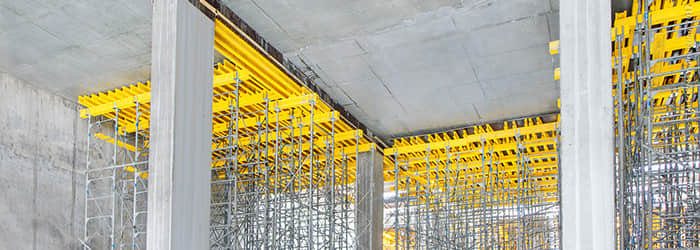What Do You Need To Know About Formwork Installation?
Apr 30, 2024This blog aims to introduce the basic knowledge of formwork installation, including the types of formwork, the importance of design, installation preparation, specific installation process, removal and maintenance, etc. By in-depth understanding of these contents, we hope to help readers improve their understanding of formwork installation work, so as to achieve efficient and safe construction goals in actual projects.
Formwork plays a vital role in construction projects. According to the different production materials, formwork can be roughly divided into several types such as wooden formwork, steel formwork, aluminum formwork and plastic formwork.




To choose a formwork, the first step is to identify the brand and model that should be used in accordance with specific project situations, cost budgets and working environment conditions. Besides this, one should also take into account the size of the moulds as well as their shapes and load bearing capacities so that it ensures that what has been formed by them satisfies actual needs for building operations.
Before the installation of the formwork, it is necessary to make proper preparation, to ensure the smooth and safe construction.
Before formwork installation is mounted, it is necessary to do a more thorough site preparation. The following is what needs to be done for good site preparation:



De-shuttering of the formwork is important and has many benefits. Firstly, the de-shuttering process allows for the visual inspection of the formwork and concrete structure and ensures that construction work is proceeding according to plan and according to the highest quality and safety standards. During the de-shuttering of formwork, if done correctly, it will also cause minimal damage to the formwork or the concrete structure and therefore enable the formwork materials to be reused, which is economically and environmentally sustainable.
Step 1 – Ensure the structure has hardened sufficiently that it can support itself without the formwork.
Step 2 – Make sure all safety precautions are in place and you have the required equipment.
Step 3 – Plan how you will de-shutter the formwork so it is done using the safest and most effective method.
Step 4 – Carefully release formwork from the concrete structure and de-shutter the formwork in a slow and controlled manner.
Step 5 – Inspect the de-shuttered formwork for damage. Planks and sheets should be carefully stacked.
Safe tips for remove shuttering: Remove shuttering always wear the personal protective equipment. Identify and remove risk to dismantling. Always have competent and experienced person to do the shuttering. Avoid carrying out the shuttering from close vicinity of others working and never hand over any materials to a person standing below.
In order to maintain the reusability and life span of formwork, proper care and maintenance should be provided.
Regular maintenance and proper storage are essential to maintain formwork performance and ensure a safe working environment. This also reduces construction costs in the long run.
Advanced production technology and equipment:
Our factory is equipped with 50 internationally advanced automated production equipment, including high-precision laser cutting machines, automatic welding robots, and multi-functional template forming machines. These advanced equipment not only greatly improve production efficiency and can produce up to 20,000 square meters of formwork per month, but also ensure the high precision and consistency of products, thus far surpassing their peers in quality.
Personalized and customized services:
We understand that every construction project is unique and therefore provide a highly customized service. Customers can choose the size, color, thickness, etc. of the template according to their own needs. We have a technical team of 30 experienced engineers who are able to design perfectly matched formwork solutions based on the specific requirements provided by customers, ensuring that the special needs of each project are met.
Professional after-sales service team:
Our after-sales service team is composed of senior experts with more than 10 years of industry experience. They are able to provide professional technical support and quick-response problem solutions. From template installation guidance to post-project maintenance, we can provide a full range of services to ensure customers' smooth use and best experience.
Competitive price advantage:
By adopting automated production lines and large-scale production, we are able to effectively control costs while maintaining high quality. In addition, our close cooperation with raw material suppliers also provides us with cost advantages, allowing us to provide products of equal or even higher quality at lower prices than other suppliers in the market. This means that by choosing us, customers not only get high-quality formwork products, but also enjoy more cost-effective solutions.
How Is Concrete Formwork Done?
What Is The Formula For Formwork?
What Percentage Of Concrete Is Formwork?
Industry Guide For Formwork --- SAFEWORK SA
How To Build Formwork --- HOWTOSPECIALIST
Cost And Time Analysis On The Selection Of Formwork Installation Method --- CIVIL-ENG